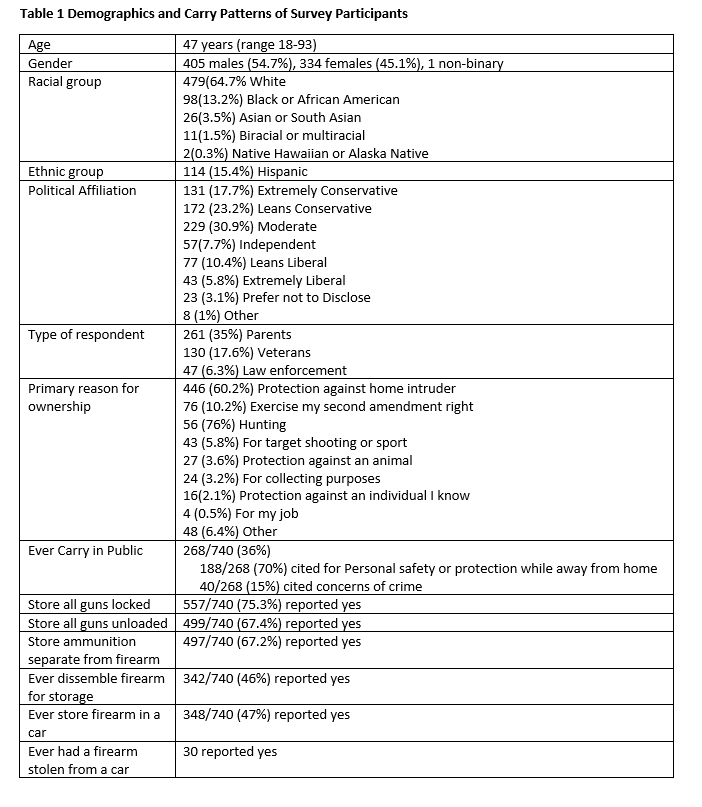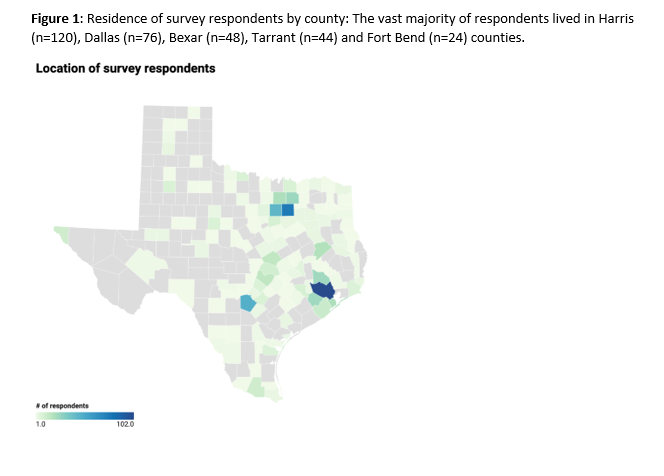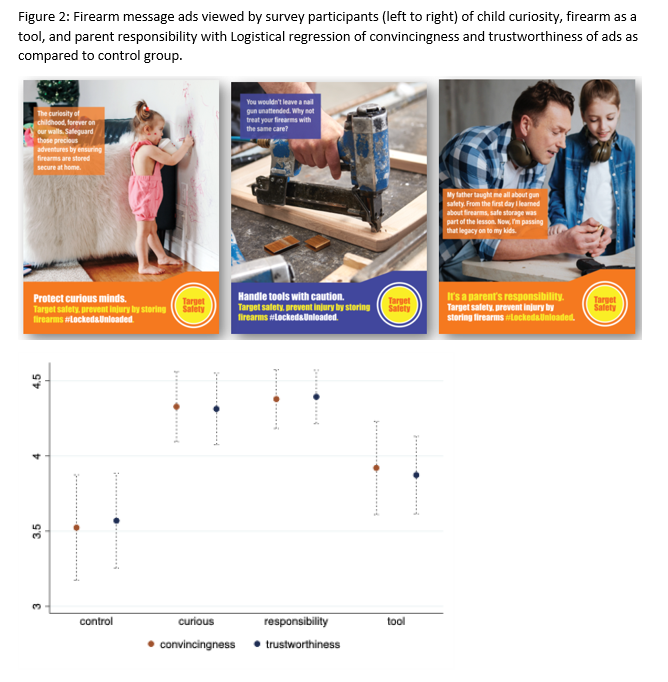Injury Prevention 2
Session: Injury Prevention 2
412 - Building a Secure Storage Campaign in Texas: Understanding the Firearm Owner Preferences and Habits
Sunday, April 27, 2025
8:30am - 10:45am HST
Publication Number: 412.4405
Sandra McKay, McGovern Medical School at the University of Texas Health Science Center at Houston, Missouri City, TX, United States; Kevin C. Rix, University of Texas Health Science Center at Houston, Dallas, TX, United States; Mike Garcia, UTHealth Science Center Houston School of Public Health, Austin, TX, United States
.jpg)
Sandra McKay, MD
Associate Professor
McGovern Medical School at the University of Texas Health Science Center at Houston
Missouri City, Texas, United States
Presenting Author(s)
Background: Firearms are a leading cause of death in children. It is imperative to discover effective mechanisms to communicate with parents and caregivers about secure firearm storage. Understanding preferred messaging is a critical step in the development of a trustworthy and convincing campaign.
Objective: Evaluate the response to different messaging conditions among firearm owning Texans
Design/Methods: An online survey was distributed to firearm owners living through Texas via Centiment market panel in September 2024. Participants were randomized into one of 4 different message conditions: Child curiosity (n=181), parent responsibility (n=186), firearm as tool (n=181) and control (n=192). Participants were asked a series of questions including rating convincingness and trustworthiness (5-point Likert scale), open ended responses to questions on acceptability, demographics, firearm ownership and storage habits, and beliefs around secure storage. Descriptive analysis and logistical regression along with qualitative analysis were used.
Results: There were 740 respondents with diverse demographics (Table and Figure 1). Among respondents, 75% reported storing all firearms locked. The primary reason for ownership reported was for protection against a home intruder (60%). A total of 46% respondents disassembled their firearm for storage, and 47% reported ever storing a firearm in a car. Both the child curiosity and the parent responsibility ads had significantly increased odds of finding the message convincing and trustworthy compared to the controls(p <.01 for child curiosity and responsibility).(Figure 2)
Open ended responses to the ads revealed overwhelmingly negative sentiment to the firearm as tool ad, with perception that it was a false comparison, whereas there was an overwhelming positive sentiment to the parent responsibility ad, generating nostalgia and intergenerational transfer of safety information. The child curiosity ad had mixed reactions. Respondents reported high levels of confidence in knowledge of safe storage best practices (4.19/5), capability in securely storing firearms from unauthorized persons (4.3/5), and ability to effectively teach others in their home about safe firearm storage (4.12/5). Respondents believed storing a firearm locked up is the most responsible thing one can do (3.74/5).
Conclusion(s): Acceptance of secure firearm storage messaging is dependent on understanding determinants for ownership and secure storage. Maximum effectiveness relies on these messages being convincing and trustworthy and our findings have identified components for widespread message dissemination.
Table 1 Demographics and Carry Patterns of Survey Participants

Figure 1: Residence of survey respondents by county
 The vast majority of respondents lived in Harris (n=120), Dallas (n=76), Bexar (n=48), Tarrant (n=44) and Fort Bend (n=24) counties.
The vast majority of respondents lived in Harris (n=120), Dallas (n=76), Bexar (n=48), Tarrant (n=44) and Fort Bend (n=24) counties. Figure 2: Firearm message ads with logistical regression analysis
 Firearm message ads viewed by survey participants (left to right) of child curiosity, firearm as a tool, and parent responsibility with Logistical regression of convincingness and trustworthiness of ads as compared to control group.
Firearm message ads viewed by survey participants (left to right) of child curiosity, firearm as a tool, and parent responsibility with Logistical regression of convincingness and trustworthiness of ads as compared to control group.
